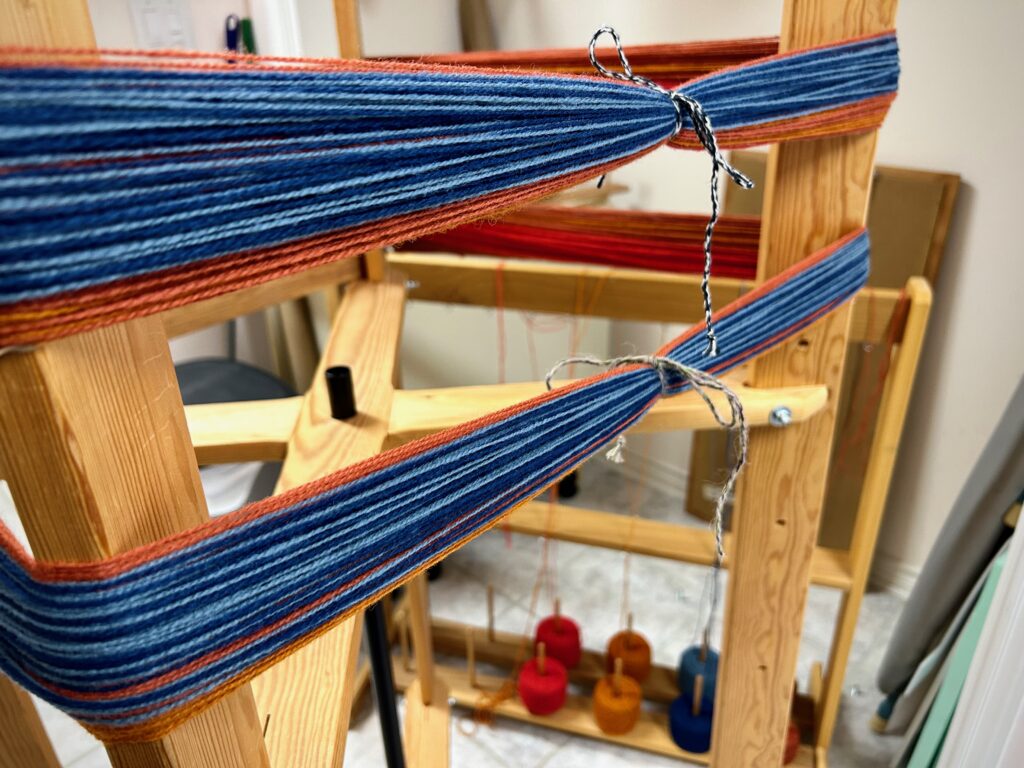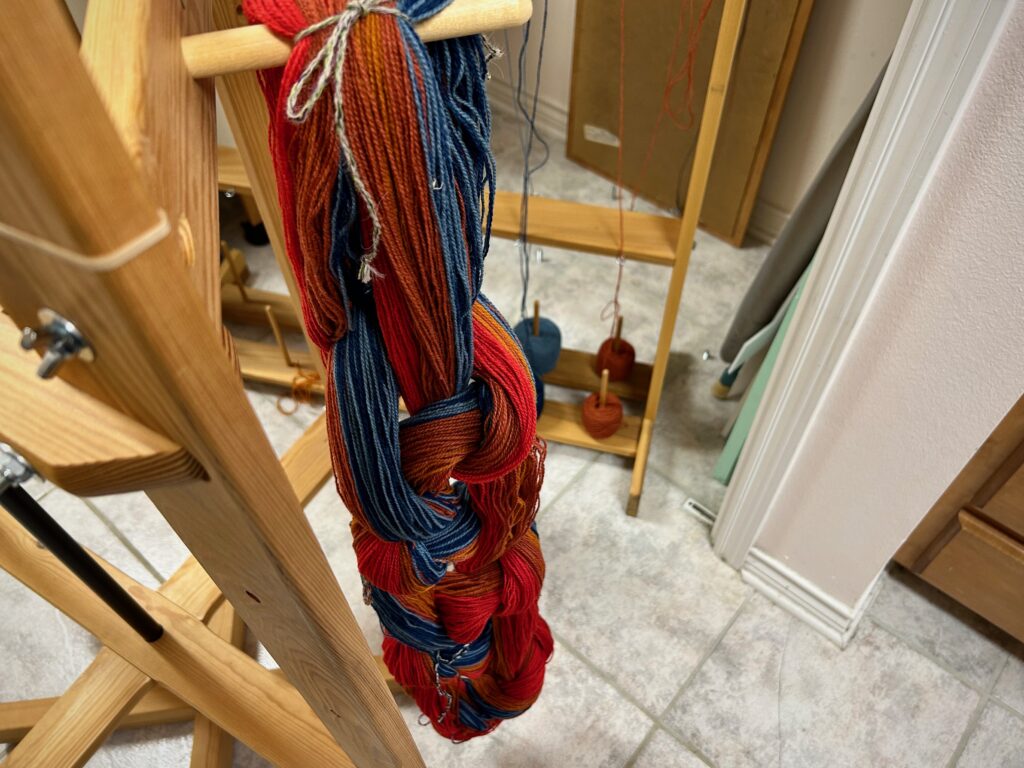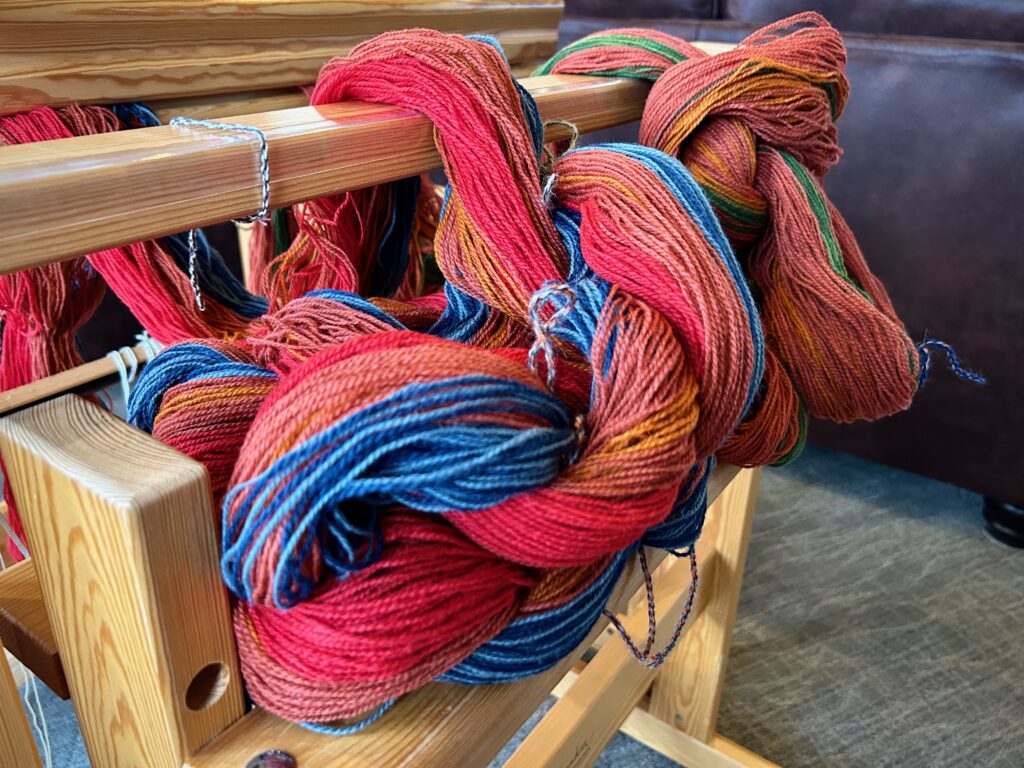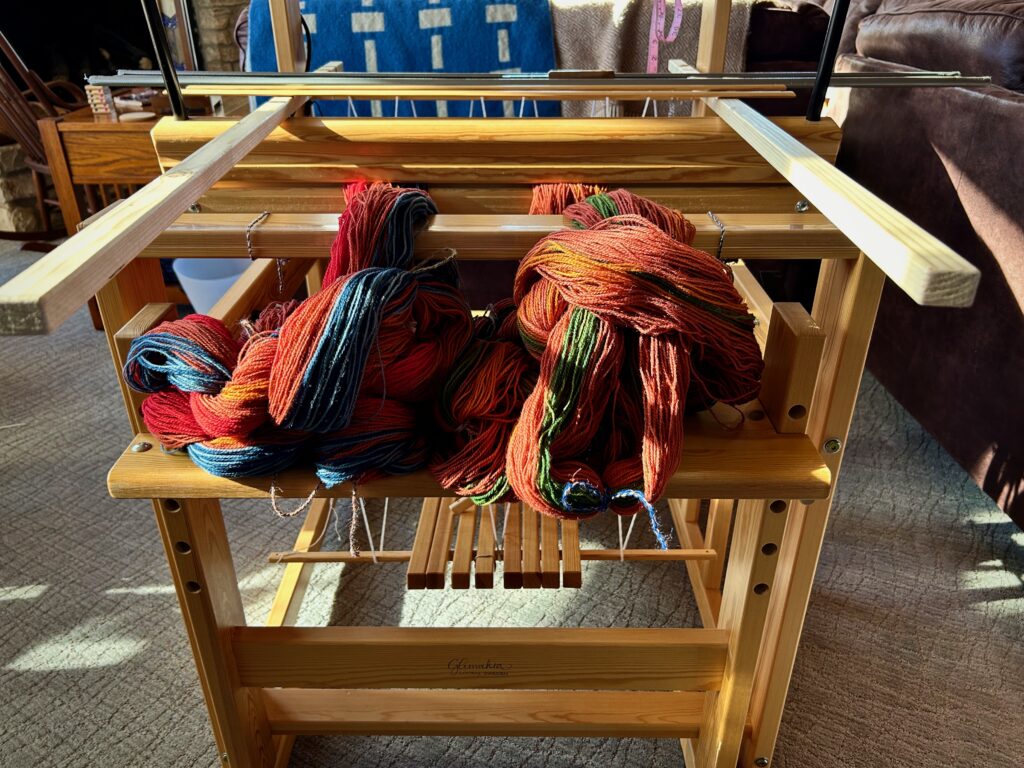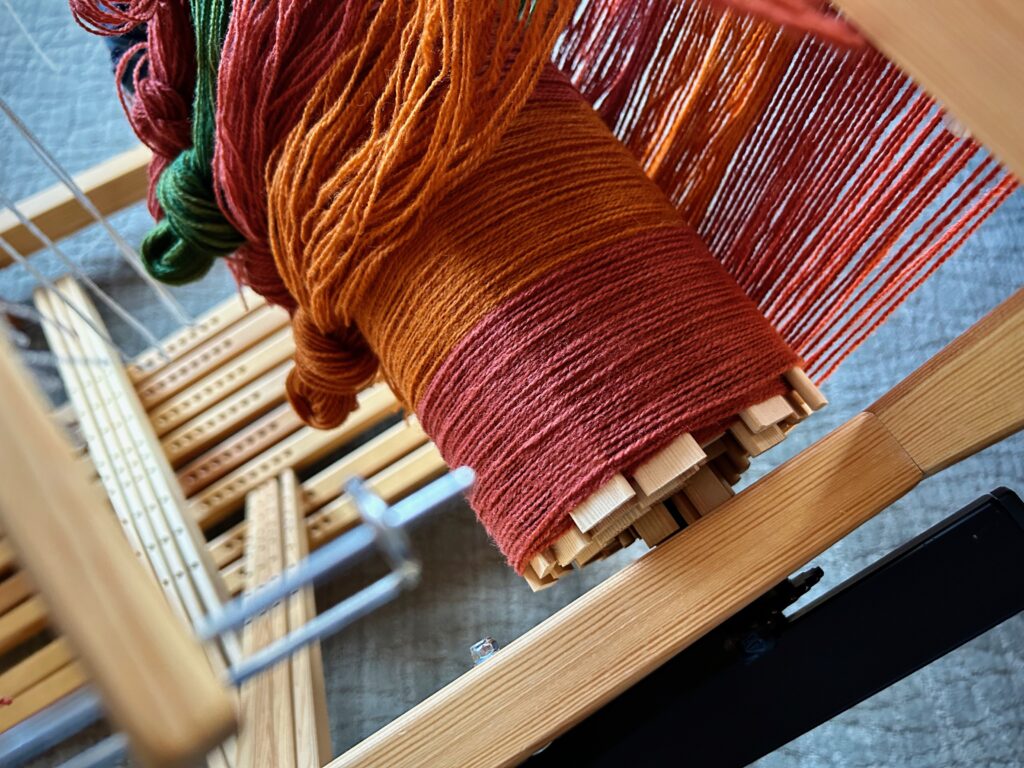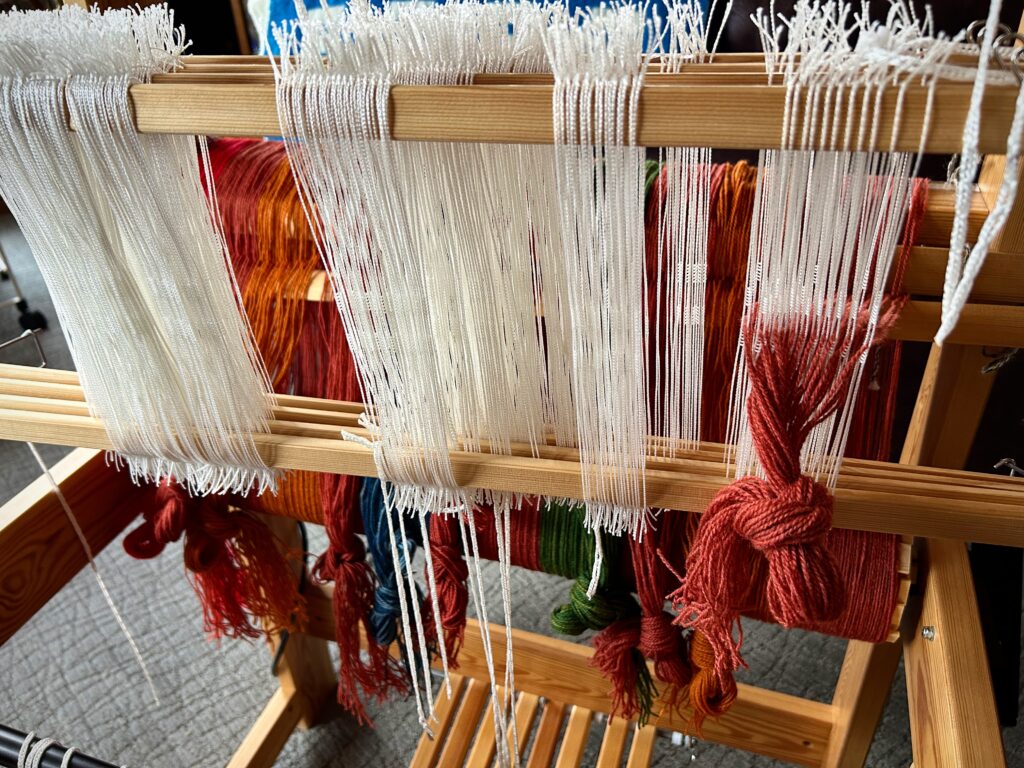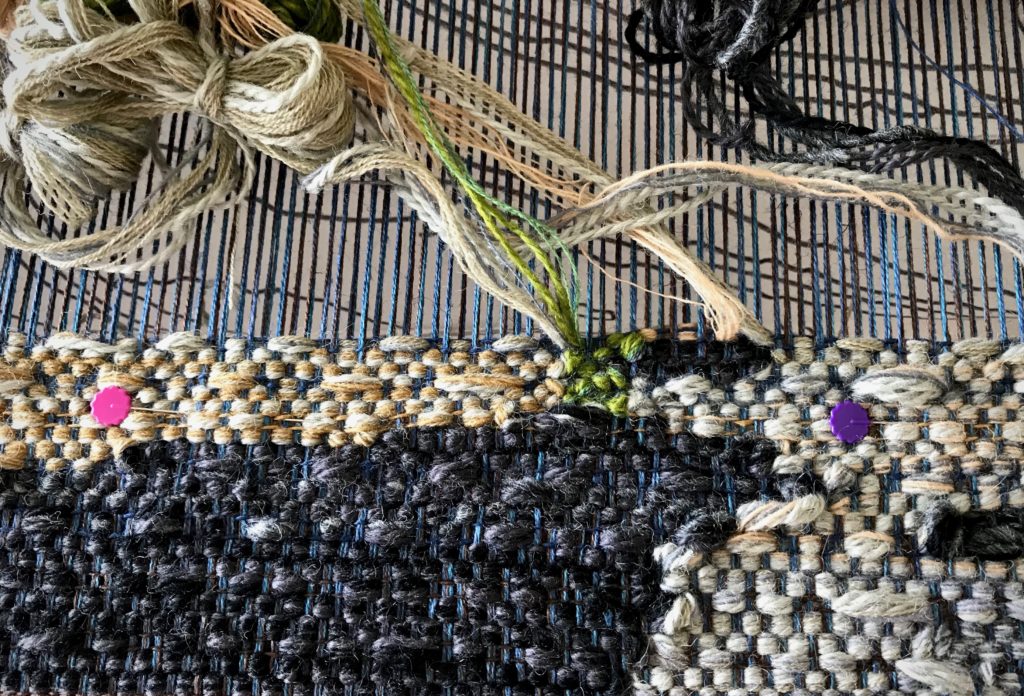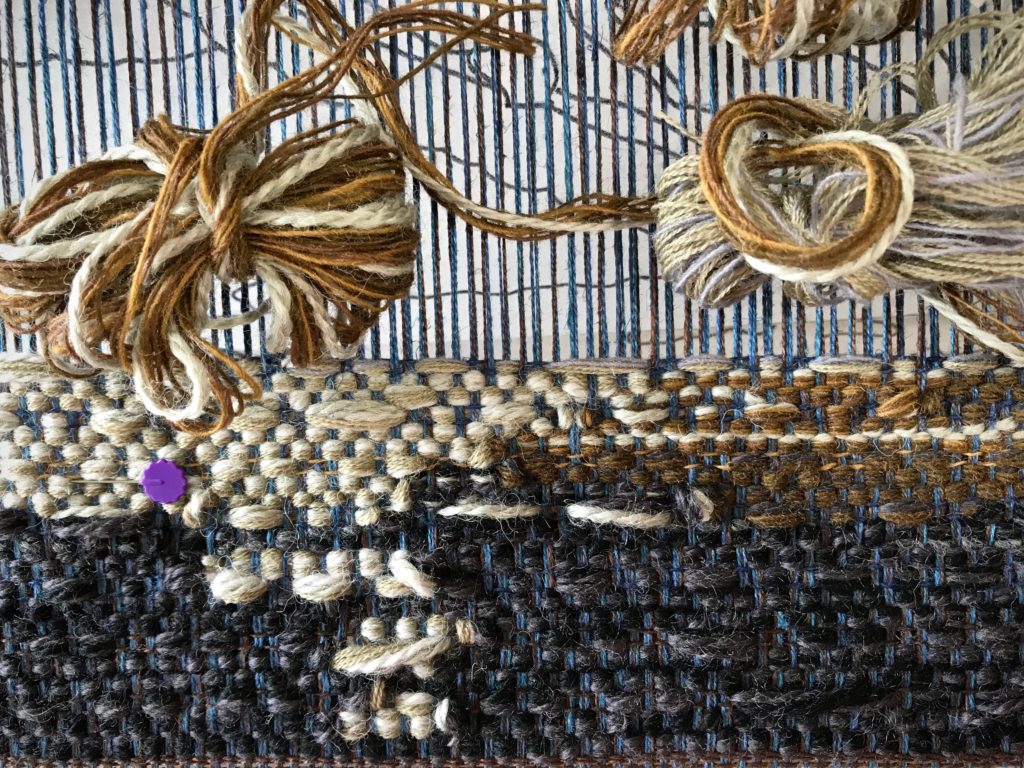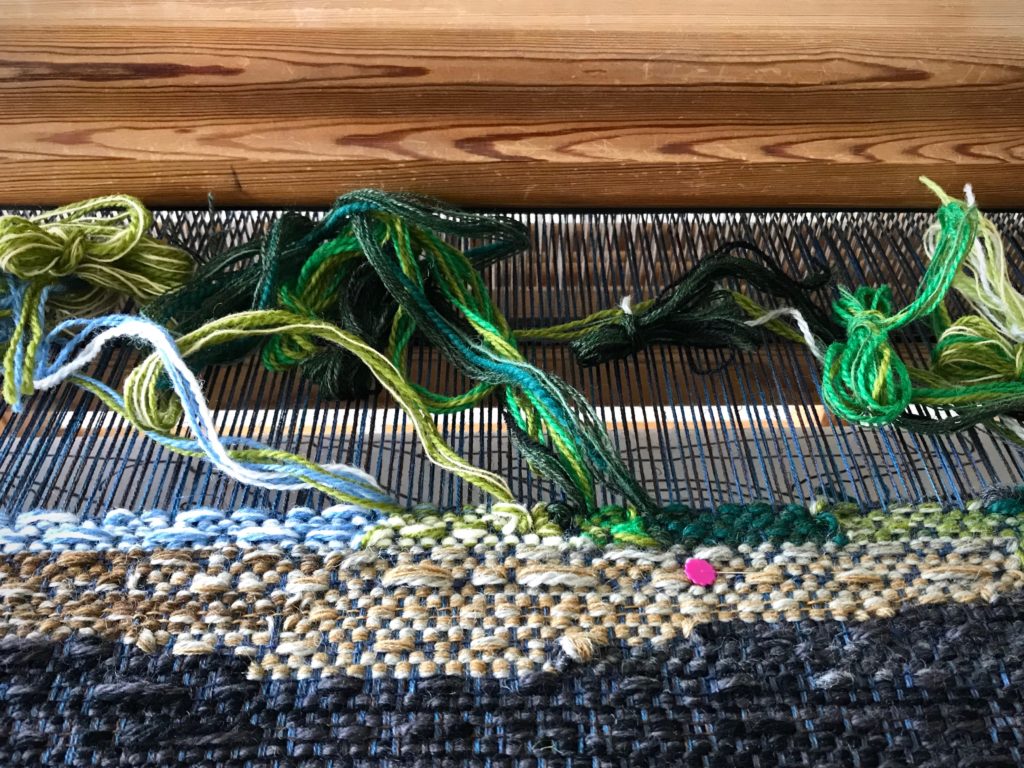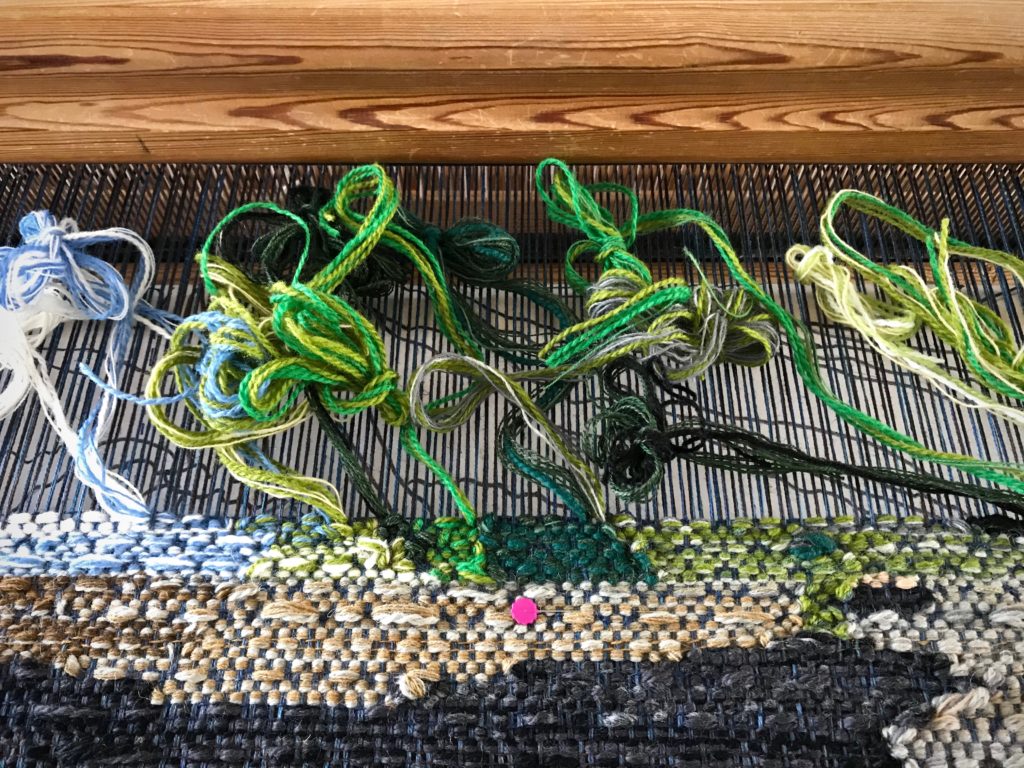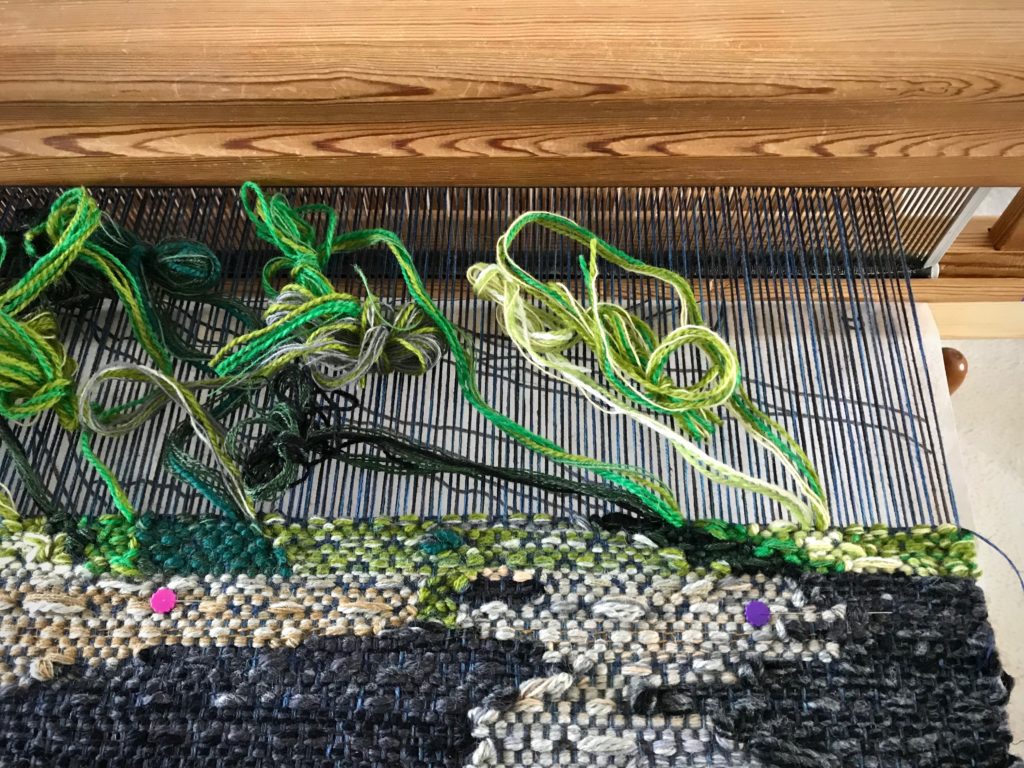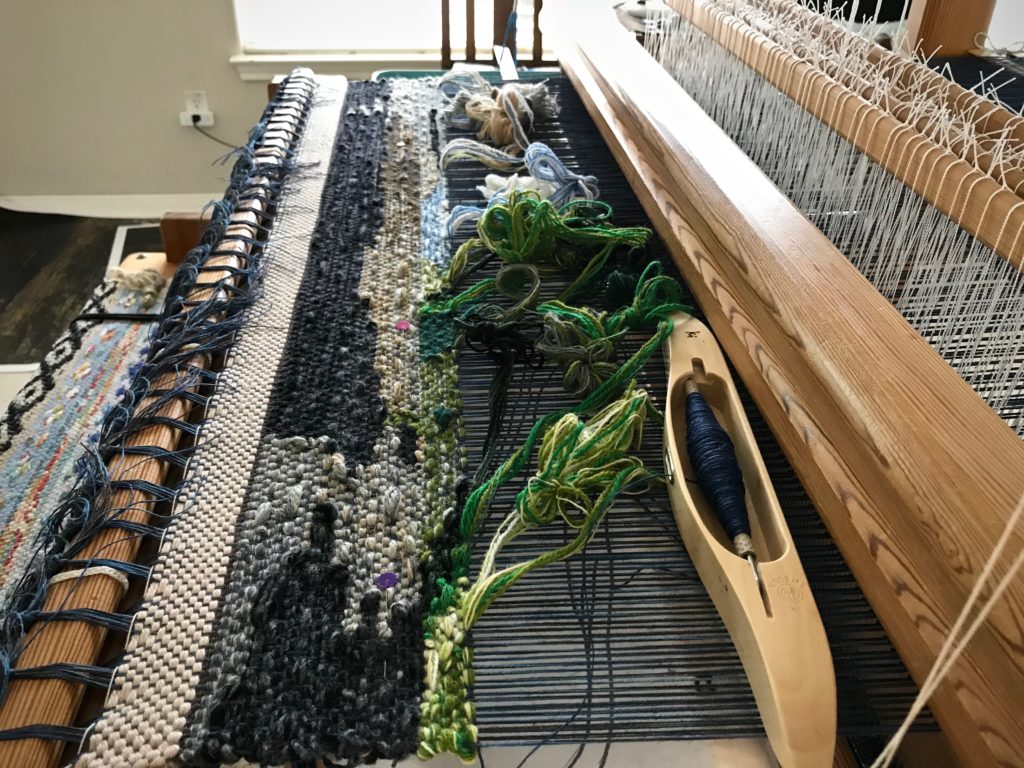I like goose-eye twill. Do you? I’ve woven it in throws, towels, and rag rugs. I am not sure why this is such a pleasing pattern to me. Maybe because it speaks of classic simplicity.
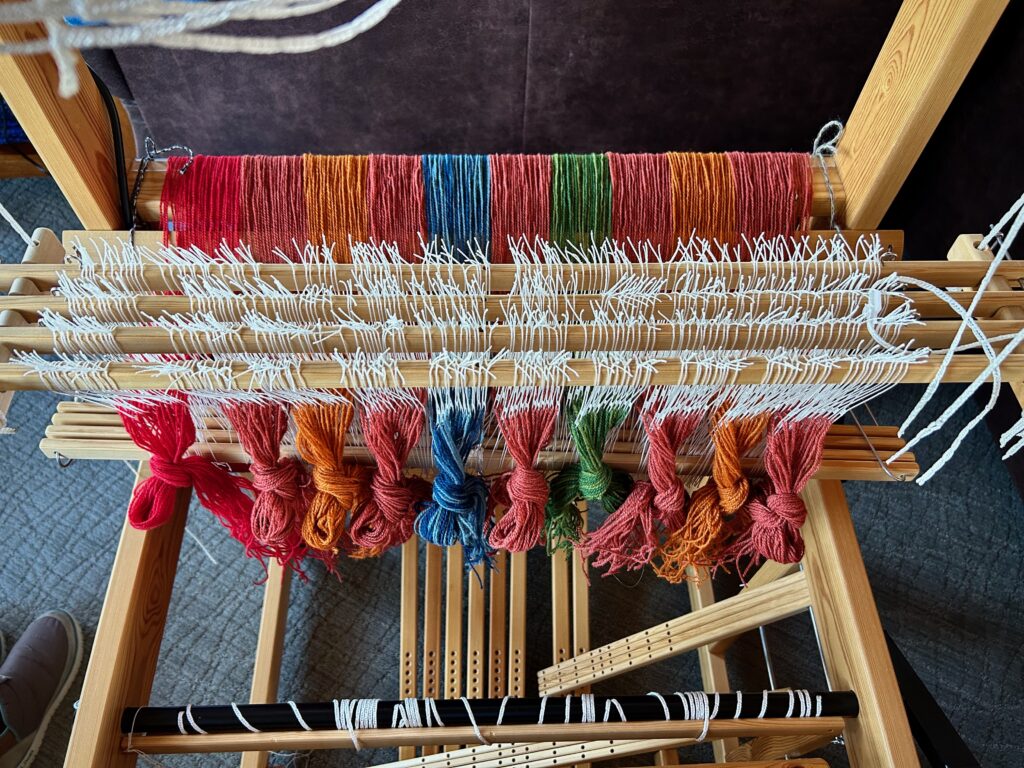
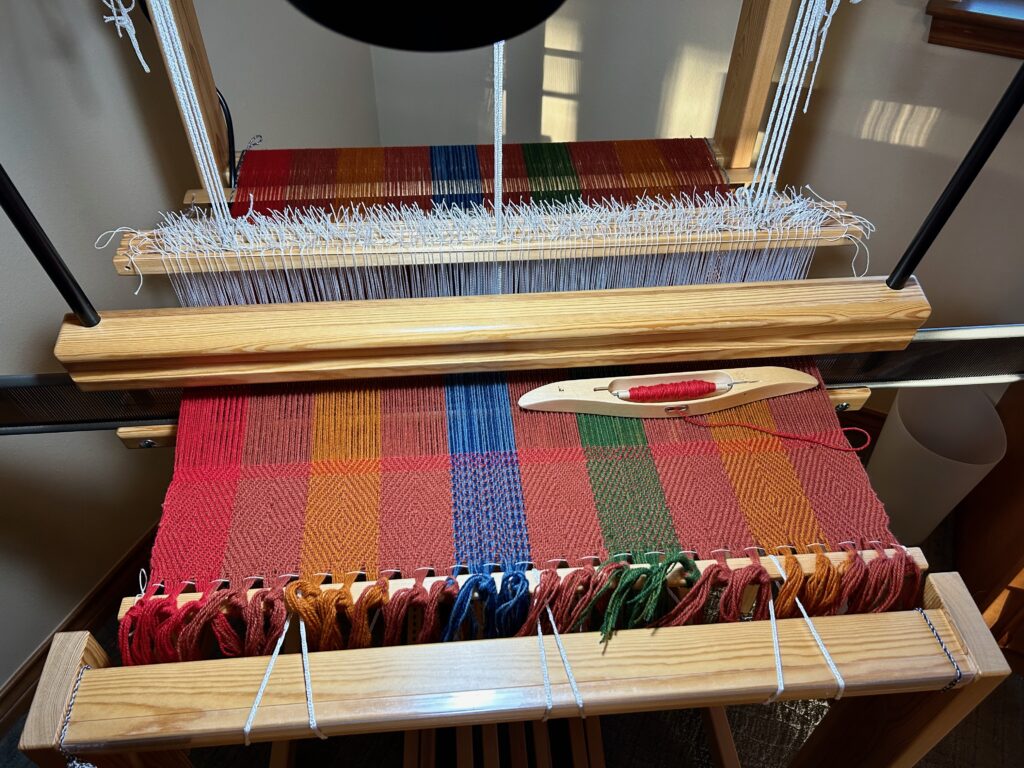
I have woven goose-eye twill with and without floating selvedges. This time is without. The advantage is that I can get a cleaner edge without floating selvedges. The disadvantage is that I can get messier edges without floating selvedges. It takes me a little practice to get the selvedges just right, catching some of the outer warp ends. After I get it down, the selvedges will be pretty tidy.
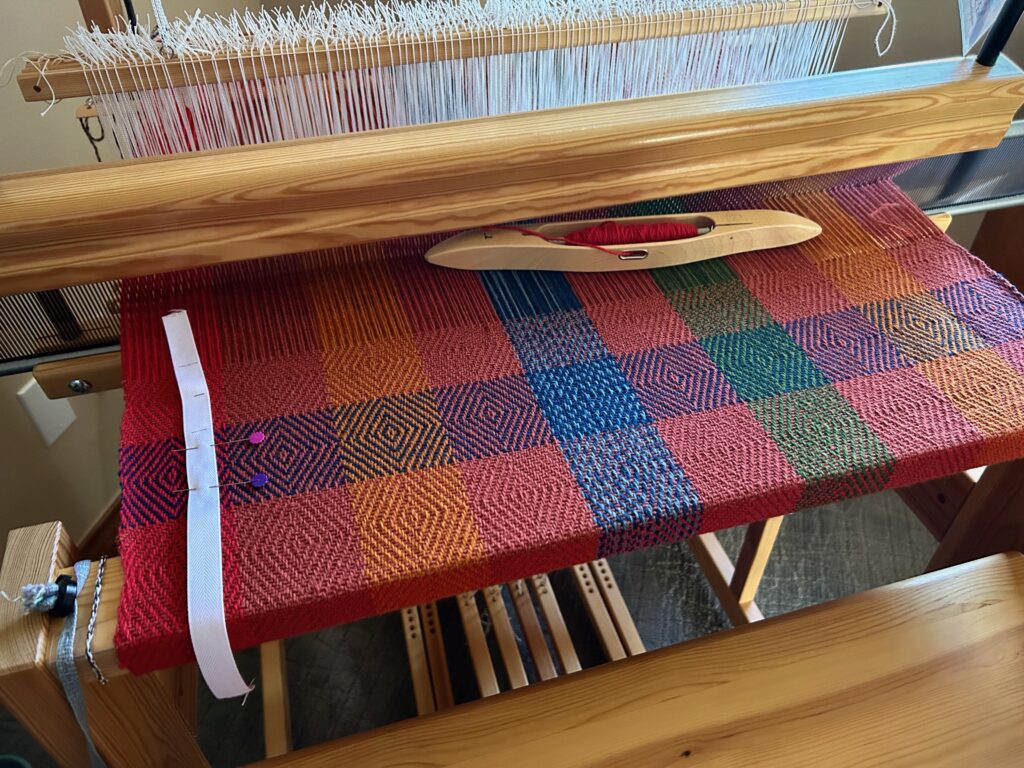
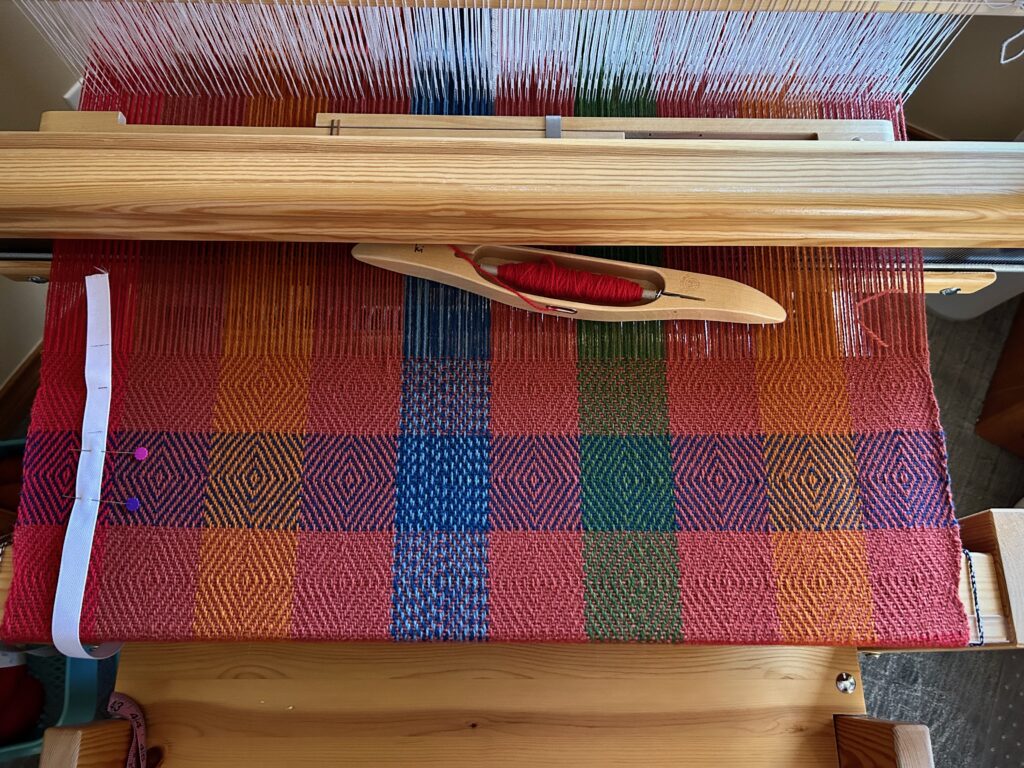
Persistence means you keep working at it until it works. And you overlook things (like the blue warp stripe) that it’s too late to change, and make the best of it. Persistence is a virtue when we persist with right things. Persist in faith. Persist in love. And always, persist in hope. Jesus waits for those who persist in leaning on him. Let’s lean in a little closer.
With faith, love, and hope,
Karen

